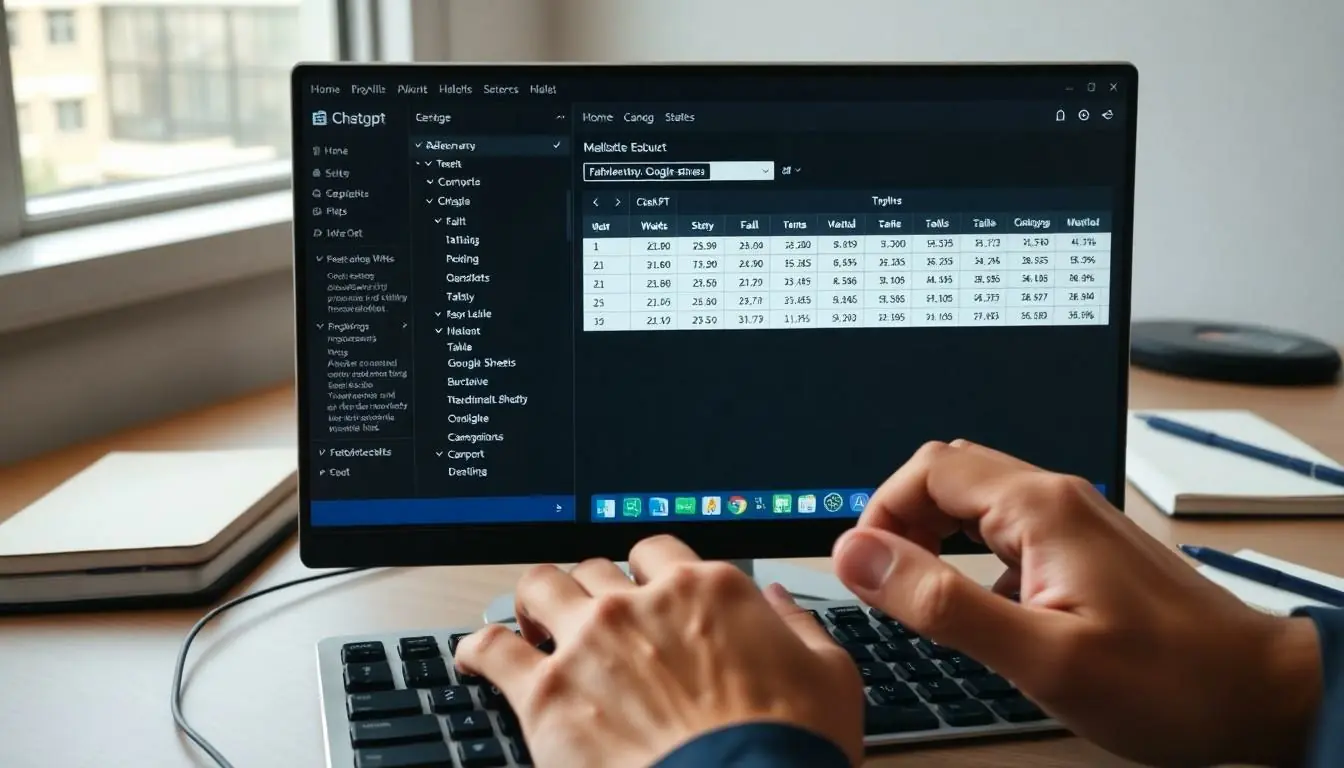In a world where data reigns supreme, knowing how to transfer information effortlessly can save time and sanity. Imagine having a brilliant table crafted by ChatGPT, ready to be plucked and placed into Google Sheets without the hassle of retyping or formatting chaos. Sounds like a dream, right? Well, it’s about to become a reality!
Table of Contents
ToggleUnderstanding ChatGPT Tables
ChatGPT tables offer a structured way to present information. This presents a significant advantage for users looking to manage data effectively.
Structure of Tables in ChatGPT
Tables in ChatGPT consist of rows and columns. Each row represents a single entry or record, while columns contain attributes or properties associated with those records. Headers in tables clarify the content of each column, making data easy to understand. Users can expect clear formatting that emphasizes readability and organization. Such structure facilitates quick data interpretation, which enhances the efficiency of data management tasks.
Formats Supported by Google Sheets
Google Sheets supports various formats for easy data utilization. Common formats include CSV, TSV, and Excel files. These options allow users to import data directly without loss of information. Users can also copy and paste tables directly into Google Sheets, which maintains formatting in most cases. With flexible import options, Google Sheets provides users with the tools necessary for effective data manipulation and analysis.
Step-by-Step Guide

This section provides a concise method for transferring tables from ChatGPT to Google Sheets, ensuring smooth data handling.
Copying Tables from ChatGPT
First, highlight the entire table in ChatGPT. Use the mouse or keyboard shortcuts to select the desired rows and columns. Once the selection is active, right-click and choose the “Copy” option or use Ctrl + C (Cmd + C on Mac) to copy the content to the clipboard. Tables usually display structured data clearly, making this step straightforward. Ensure that all necessary data is included in the selection. Having done that, the information is ready for pasting into Google Sheets.
Pasting into Google Sheets
Next, navigate to Google Sheets and select the cell where you want to paste the table. Right-click and select “Paste,” or use the keyboard shortcut Ctrl + V (Cmd + V on Mac) to insert the copied data. Google Sheets recognizes the format and retains the table structure, preserving rows and columns effectively. If there are any adjustments needed, use the built-in formatting options to fine-tune the appearance. Completing this step allows for efficient data manipulation and analysis in your spreadsheet.
Tips for Ensuring Data Accuracy
Ensuring data accuracy during the transfer process enhances the reliability of analysis in Google Sheets. Careful review of table data is essential for maintaining integrity.
Reviewing Table Data
Start by verifying each entry after pasting it into Google Sheets. Confirm that the number of rows and columns matches the original table in ChatGPT. Checking for any missing or duplicated entries helps catch errors early. If discrepancies arise, cross-reference information with the original source. Regularly utilizing Google Sheets’ data validation features also improves data accuracy. Simple tools like conditional formatting can highlight potential issues, prompting a closer examination of the data.
Common Issues and Troubleshooting
Common problems include formatting errors, where numbers appear as text, affecting calculations. If this occurs, select affected cells and change the format to ‘Number’ or ‘Automatic.’ Sometimes extra spaces in cells lead to inaccuracies, so consider using the TRIM function to clean up data. When tables don’t maintain their structure, rerun the copy-paste process to ensure a clean transfer. For persistent issues, revisit the copying process, checking each step for reliability. Being proactive about these potential challenges prevents data inaccuracies and streamlines analysis.
Additional Features of Google Sheets
Google Sheets offers a variety of features that enhance data organization and analysis. Users benefit from effective formatting and extensive function options, making it an ideal tool for handling data efficiently.
Formatting Your Tables
Formatting tables in Google Sheets optimizes readability and presentation. Users can adjust cell colors to highlight essential data points, apply borders for better structure, and utilize font styles to differentiate headings from content. Additionally, applying conditional formatting allows users to automatically change cell colors based on specific criteria, drawing attention to critical values. Adjusting column widths and row heights ensures all data is visible without excessive scrolling. By utilizing these formatting options, data becomes more accessible and visually appealing.
Using Functions for Better Data Management
Leveraging functions in Google Sheets enhances data management capabilities. Functions like SUM and AVERAGE allow quick calculations on selected data. Users can combine functions with cell ranges to automate complex operations, saving time during analysis. The VLOOKUP function enables users to search for specific data points across tables, improving data retrieval efficiency. Further, employing functions such as COUNTIF and SUMIF helps analyze data trends by applying conditions. Utilizing these functions allows for streamlined data processing and insightful analysis, transforming raw data into actionable insights.
Transferring tables from ChatGPT to Google Sheets simplifies data management and enhances productivity. By following the outlined steps users can efficiently copy and paste data while preserving its structure. This seamless integration not only saves time but also reduces the likelihood of errors that come with manual data entry.
With Google Sheets’ versatile formatting and powerful functions users can further refine their data for better analysis and presentation. By leveraging these tools users can ensure their data remains accurate and easy to interpret. Embracing these techniques will undoubtedly streamline workflows and improve overall data handling efficiency.







